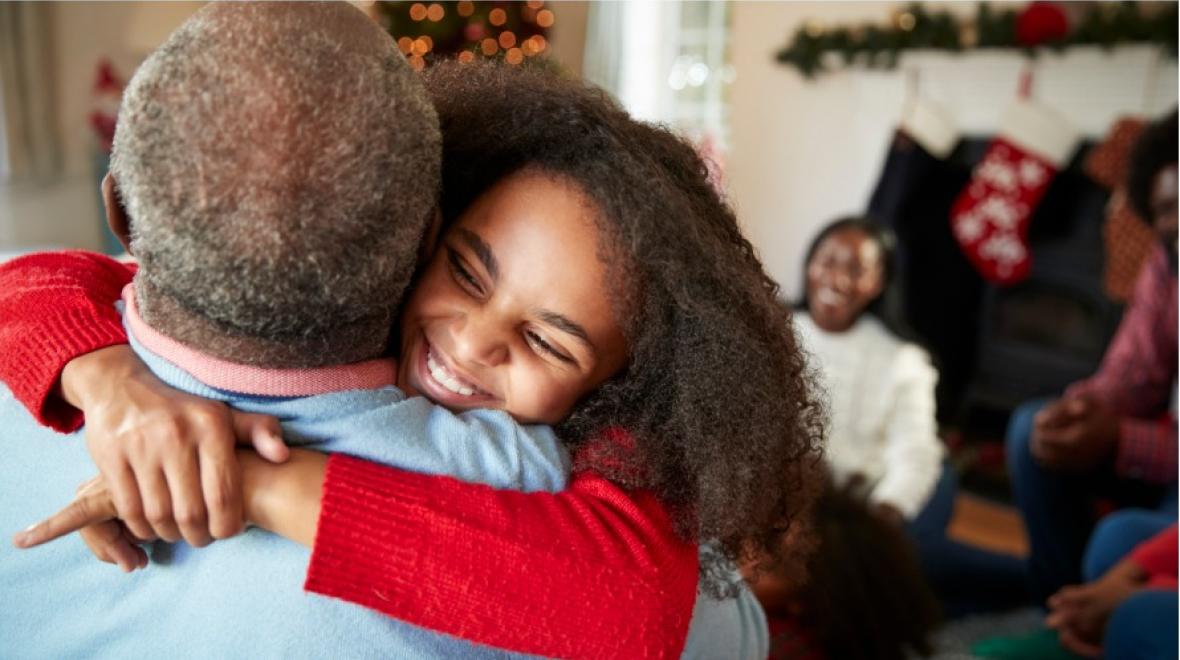
Gratitude seems to be the character trait du jour, with new articles touting its many benefits popping up in our news feeds almost daily. Scientists say that gratitude makes us mentally and physically healthier, improves sleep, bolsters immunity, helps alleviate anxiety and depression, improves self-esteem, reduces stress, increases empathy and reduces aggression … the list goes on and on.
Human brains are wired to focus on the negative instead of the positive. This so-called “negativity bias” accounts in large part for why we tend to hone in on unpleasant emotions, difficult interactions and bad news more than the positives in our lives. Our brains actually become more active in response to negative stimuli. Eons ago, this trait helped our ancestors when a quick reaction to imminent danger could mean the difference between life and death. But in today’s world, the negativity bias can be harmful to our personal relationships and to our overall mental health. One way to counteract the negativity bias and calm our modern brains is by practicing gratitude.
It may seem ridiculous to try to feel grateful now, when it feels like everything is crashing down around us. But studies show that gratitude can play a major role in reducing trauma and increasing mental resilience, even in the worst of times.
According to Ryan Fehr, a world-renowned gratitude expert, gratitude does more than just make us happier.
“We tend to overemphasize this idea that gratitude improves our well-being. Sometimes I call that ‘gratitude lite.’ You see these headlines that say: ‘You want to be happier, be more grateful, do a gratitude journal, you’ll feel better.’”
But true gratitude goes deeper than that. Fehr refers to a quote by the Roman philosopher Cicero: “Gratitude is not only the greatest of virtues, but the parent of all others.”
“When Cicero said that, he wasn’t thinking that gratitude is something that makes us happy, but something that transforms our life in a deeper way,” says Fehr. “I think the most powerful thing that gratitude can do is to really transform our relationships with other people, and that helps us live a more connected, fulfilling and impactful life.”
As parents, we all want to raise healthy, happy children. Helping children develop a gratitude practice might be one of the best ways to do just that. But how? Fehr offers several suggestions.
For the whole family
The appreciation circle
Fehr suggests families try a practice called the “appreciation circle,” which is used in some workplaces. It goes like this: Participants sit in a circle with one spot designated as the “appreciation chair,” and each person takes a turn to share what they appreciate about the person seated in the chair. The recipient of the compliments is only allowed to say thank you. Switch seats until everyone has been appreciated.
For younger children
Going beyond good manners
“We encourage our kids to say thank you to other people, and I think that’s good. It’s more in the service of teaching a child to be polite, rather than teaching them a way of thinking about the world — in interacting with the world more broadly. I think that when we think about this idea of cultivating gratitude in children, we want to take that broader approach. Really, what we are trying to teach our children is a deeper understanding of how relationships work and how to operate within relationships in an effective way,” says Fehr.
Fehr suggests starting with a simple conversation with your child that incorporates the following four steps:
- Noticing: Help the child notice the good things in their lives. You might ask, “Hey, did you notice that your grandma gave you this toy?”
- Thinking: Help the child think about why someone gave them that object. You could ask, “Why do you think Grandma gave you that toy?”
- Feeling: Next, help the child describe their feelings by asking, “How did you feel when Grandma gave you that toy?”
- Doing: Finally, ask the child to then think of what they can do in response to the gift. The child might respond with, “I could give Grandma a hug.” Then offer options. You could say, “Yes, or you could share a toy with one of your friends.”
For tweens and teens
Don’t direct; plant seeds, instead
It can be hard to get tweens and teens to appreciate what they have, especially with social media giving the impression that everyone else’s life is better or easier than their own. But at this stage of life, gratitude is more important than ever. One study showed that teens who are more grateful experience less delinquency (use of alcohol and drugs, cheating on tests) and less depression. Another study found that gratitude decreased competitiveness in teens.
Fehr says that letting tweens and teens create their own way of expressing gratitude can be helpful.
“As children get older and start valuing their autonomy, it’s nice to be a little less directive,” explains Fehr. “Help them find ways that work for them to express gratitude to other people. You could say, for example, ‘A letter is one way to do it, or you could send an email.’ Gratitude expressions tend to be most powerful when they’re in person. So, I would encourage them to practice gratitude in person-to-person interactions.”
Being a role model also makes a difference
“Even if your teen doesn’t want to go with you [speaking hypothetically] to give out bags to the homeless on a given weekend, that act of you going anyway and illustrating that you make that a priority in your life is still powerful, even if it just plants that seed for later on in their lives,” says Fehr.
Adults
Find what works for you through a gratitude boot camp
How do we model gratitude when we might be struggling with our own frustrations? For adults, Fehr suggests a “gratitude boot camp.” This seven-day program can help adults figure out what works best for them. (Fehr credits the concept of a gratitude boot camp to Robert Emmons’ book “Gratitude Works! A 21-Day Program for Creating Emotional Prosperity.”)
Day 1: The Three Blessings
Write down three good things that happened to you that day for which you can give another person credit.
Day 2: To Whom for What
Think of three people for whom you are grateful in your life and write about the reasons.
Day 3: Gratitude Conversation
Have a conversation with a friend, family member or coworker about the things in your life you are grateful for.
Day 4: Expressing Appreciation
Identify a specific person and express appreciation to them, ideally in person.
Day 5: Absence of Blessing
Think about an aspect of your life for which you are grateful and spend a few minutes writing about what your life would be like without it.
Day 6: Pay It Forward
Show appreciation for another person through quality time spent together or an act of service.
Day 7: Day of Reflection
Spend a few minutes writing about your experiences over the past few days.
Fehr suggests thinking of gratitude as an everyday practice, for both the little and the big things in life, by which we express gratitude in our commonplace interactions with others. Documenting your blessings by using a journal is a good start for developing a gratitude practice, but don’t keep it to yourself. “I would encourage people to take the next step in expressing it. It’s really when we bring our gratitude into the world with our words and with our actions that its power can be felt. It can impact our relationships and other people’s lives — that’s where it really matters.”
Gratitude doesn’t just encourage us to thank those who have helped us directly; it encourages helping others, in general. “Experiencing gratitude has a spillover effect, making you want to pay it forward,” says Fehr.
If we all did that, what a wonderful world it would be.











